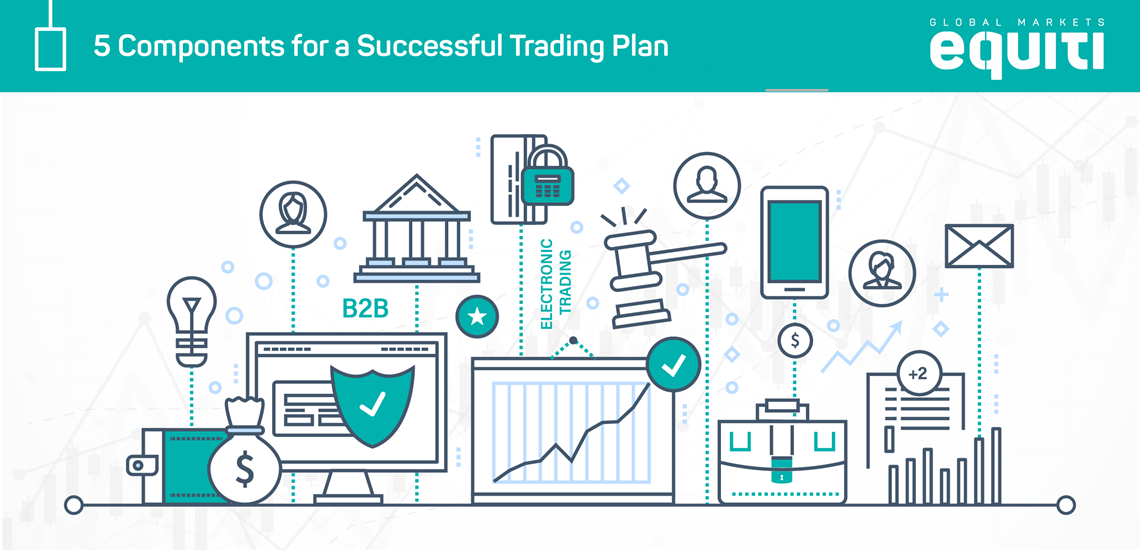The author is an expert in the field of multi-asset trading.
5 Components for a Successful Trading Plan

To ensure that you are not trading based on your emotions or misguided psychological motives, it is important to always develop a trading plan before undertaking any market activity. Those who don’t develop a clear and consistent trading plan and commit to it are more likely to enter random deals without any understanding and reasoning. A trading plan gives you the guidance and direction you need to spot strong opportunities and stick by them.
What is a trading plan?
A trading plan is a list of regularly arranged steps taken prior to a trading deal, which serves as the objective guidance for trading the markets and reminds you of your overall short and long-term goals. A trading plan differs from a trading strategy, which determines your trade entry and exits.
Successful Trading Plan Components
Mental Preparation
Before starting to trade, you should make sure that you are in a positive psychological state free from any stress. It is advisable not to trade if you are facing personal problems or are in a nervous or otherwise anxious mood. You need to be emotionally and psychologically prepared before entering any deals.
Capital Management
At the beginning of trading and prior to entering into a transaction, you must determine the risk ratio you can afford. Professional traders tend to risk between only 1% to 10% of their capital on any one deal. Your own risk tolerance will be determined by your ability to risk and sustain a loss.
Setting a Target
Prior to trading you should set your ambitions and objectives for the Forex market in terms of risk rate and expected profits, whether weekly, monthly or annual. These must be evaluated regularly to see if you are on the right track or whether you need to make some adjustments.
Trading Style & Strategy
Before you start your trading day you should follow some steps:
Follow the news and review the economic calendar
Identify the main support and resistance levels on the currency pairs to be traded
Determine the market conditions (whether the market is in a clear direction or fluctuating)
Define your trading strategy
Determine the point of entry, goal and stop loss (do not forget your capital management guidelines in determining stop loss)
You should try your trading strategy on a demo account for at least two months before trading on a live account.
After Closing the Deal
One of the best practices successful traders utilise is keeping a record of their entire performance (gains and losses), which can also help you analyse the effectiveness of your trading plan and identify what you should do to improve your performance. And always remember, if something isn’t working out it is advisable to step away and reassess.
Margined Forex and CFD trading are leveraged products and can result in losses that exceed deposits. The value of your contract can fall as well as rise, which could result in receiving back less than you originally deposited. Please ensure you understand the risks and be sure to manage your risk exposure effectively.